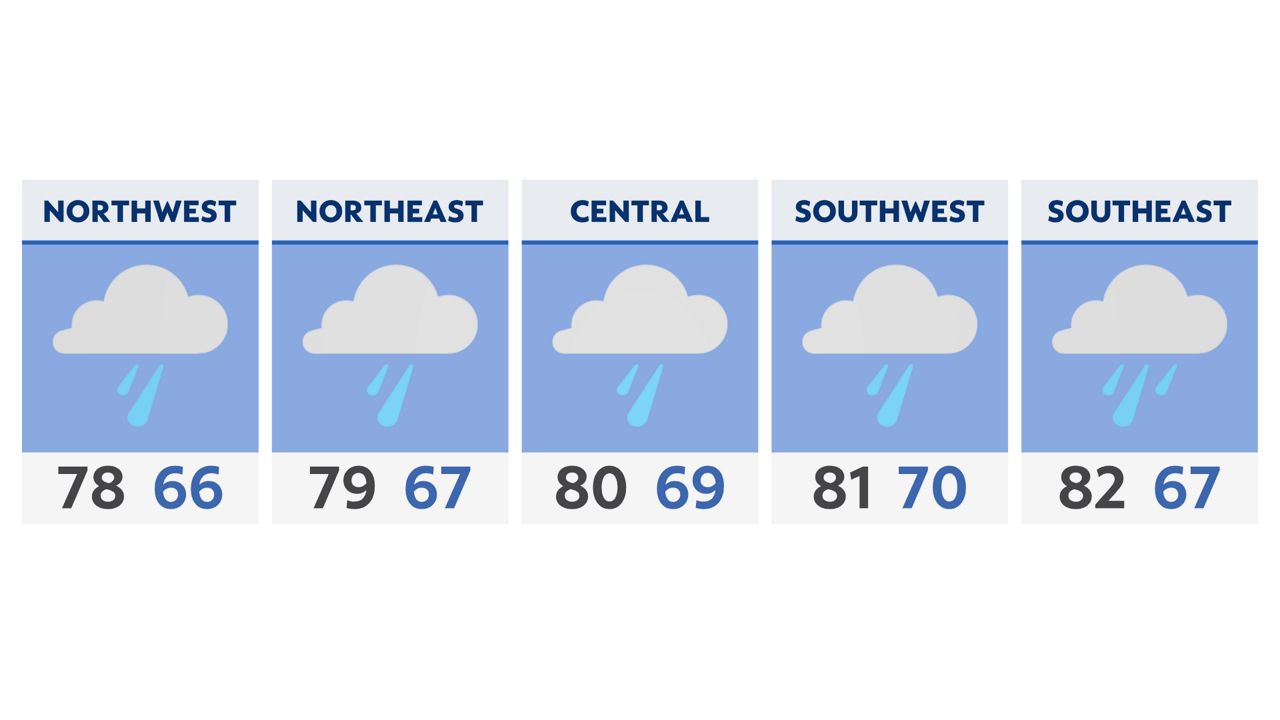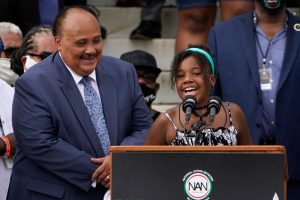President Joe Biden authorized the deployment of 5,000 U.S. troops to Afghanistan on Saturday to aid in the “orderly and safe drawdown” of U.S. and allied personnel, and Afghan allies who aided the U.S. and NATO allies.
On Sunday, as conditions in Afghanistan deteriorated, the U.S. sent an additional 1,000 troops to the country, bringing the total to 6,000.
A defense official told The Associated Press on Sunday that 1,000 troops from the 82nd Airborne are going directly to Kabul instead of going to Kuwait as a standby force. The defense official spoke on condition of anonymity to discuss a deployment decision not yet announced by the Pentagon.
The Taliban swept into Afghanistan’s capital Sunday after the government collapsed and the embattled president fled the country, signaling the end of a costly two-decade U.S. campaign to remake the country.
Heavily armed Taliban fighters fanned out across the capital, and several entered Kabul’s abandoned presidential palace. Suhail Shaheen, a Taliban spokesman and negotiator, told The Associated Press that the militants would hold talks in the coming days aimed at forming an “open, inclusive Islamic government.”
Earlier, a Taliban official said the group would announce from the palace the restoration of the Islamic Emirate of Afghanistan, the formal name of the country under Taliban rule before the militants were ousted by U.S.-led forces in the wake of the 9/11 attacks, which were orchestrated by al-Qaida while it was being sheltered by the Taliban. But that plan appeared to be on hold.
Kabul was gripped by panic. Helicopters raced overhead throughout the day to evacuate personnel from the U.S. Embassy. Smoke rose near the compound as staff destroyed important documents, and the American flag was lowered. Several other Western missions also prepared to pull their people out.
Though the Taliban had promised a peaceful transition, the U.S. Embassy suspended operations and warned Americans late in the day to shelter in place and not try to get to the airport.
The president in his statement Saturday discussed a range of actions his administraion is doing to combat further aggression in Afghanistan, including warning Taliban insurgents “that any action on their part” that puts U.S. personnel in danger would be met by a “swift and strong” response from the U.S military.
His remarks come as the U.S. moves to evacuate some personnel from the U.S. Embassy in Kabul, as well as Afghan allies who have assisted U.S. troops in their nearly 20-year mission in the country.
The decision to bolster the troop size comes just two days after the U.S. first ordered 3,000 troops be sent to Kabul to aid in the evacuation, reflecting the dire and quickly-changing security situation on the ground as Taliban insurgents continued their procession towards Kabul.
“Over the past several days I have been in close contact with my national security team to give them direction on how to protect our interests and values as we end our military mission in Afghanistan,” Biden said in a statement Saturday.
“First, based on the recommendations of our diplomatic, military, and intelligence teams, I have authorized the deployment of approximately 5,000 US troops to make sure we can have an orderly and safe drawdown of U.S. personnel and other allied personnel and an orderly and safe evacuation of Afghans who helped our troops during our mission and those at special risk from the Taliban advance,” the president continued.
In addition, he said, the U.S has conveyed to Taliban representatives that “any action on their part on the ground in Afghanistan, that puts U.S. personnel or our mission at risk there, will be met with a swift and strong U.S. military response.”
Biden also ordered the intelligence community and armed forces to ensure that they can “address future terrorist threats from Afghanistan,” and directed Secretary of State Antony Blinken to “engage with key regional stakeholders” and “support President [Ashraf] Ghani and other Afghan leaders” as they seek to resolve the conflict through diplomacy.
Blinken spoke with President Ghani on Saturday, with the State Department confirmed in a separate statement, noting that they “discussed the urgency of ongoing diplomatic and political efforts to reduce the violence” in Afghanistan.
Secretary Blinken also “emphasized the United States’ commitment to a strong diplomatic and security relationship with the Government of Afghanistan and our continuing support for the people of Afghanistan,” the statement continued.
The president tapped Tracey Jacobson, a career diplomat under the Bush, Obama and Trump administrations, to lead a whole-of-government effort “to process, transport, and relocate Afghan special immigrant visa applicants and other Afghan allies.”
“Our hearts go out to the brave Afghan men and women who are now at risk,” Biden continued. “We are working to evacuate thousands of those who helped our cause and their families.”
Also on Saturday, a new contingent of Marines arrived in Kabul, joining an advance group of Marines who arrived the previous day.
The last-minute decision to re-insert thousands of U.S. troops into Afghanistan calls into question whether President Joe Biden will meet his Aug. 31 deadline for fully withdrawing combat forces – an idea that the president’s statement Saturday firmly attempted to put to rest.
“One more year, or five more years, of U.S. military presence would not have made a difference if the Afghan military cannot or will not hold its own country,” Biden said. “And an endless American presence in the middle of another country’s civil conflict was not acceptable to me.”
He continued: “When I came to office, I inherited a deal cut by my predecessor—which he invited the Taliban to discuss at Camp David on the eve of 9/11 of 2019—that left the Taliban in the strongest position militarily since 2001 and imposed a May 1, 2021 deadline on US forces. Shortly before he left office, he also drew US forces down to a bare minimum of 2,500. Therefore, when I became President, I faced a choice—follow through on the deal, with a brief extension to get our forces and our allies’ forces out safely, or ramp up our presence and send more American troops to fight once again in another country’s civil conflict.”
“I was the fourth President to preside over an American troop presence in Afghanistan—two Republicans, two Democrats,” Biden said in conclusion. “I would not, and will not, pass this war onto a fifth.”
Biden had given the Pentagon until Aug. 31 to complete the withdrawal of the 2,500 to 3,000 troops that were in Afghanistan when he announced in April that he was ending U.S. involvement in the war. That number has dropped to just under 1,000, and all but about 650 are scheduled to be gone by the end of the month; the 650 are to remain to help protect the U.S. diplomatic presence, including with aircraft and defensive weapons at the Kabul airport.
But Thursday’s decision to dispatch 3,000 fresh troops to the airport adds a new twist to the U.S. withdrawal. There is no discussion of rejoining the war, but the number of troops needed for security will depend on decisions about keeping the embassy open and the extent of a Taliban threat to the capital in coming days.
Having the Aug. 31 deadline pass with thousands of U.S. troops in the country would be awkward for Biden given his insistence on ending the 20-year U.S. war by that date. Republicans have already criticized the withdrawal as a mistake and ill-planned, though there’s little political appetite by either party to send fresh troops to fight the Taliban.
There were a little over 4,000 personnel still at the embassy; the State Department has not said how many are being pulled out in the next two weeks.
The Biden administration warned Taliban officials directly that the U.S. would respond if the Taliban attacked Americans during the stepped-up deployments and evacuations.
The Associated Press contributed to this report.




